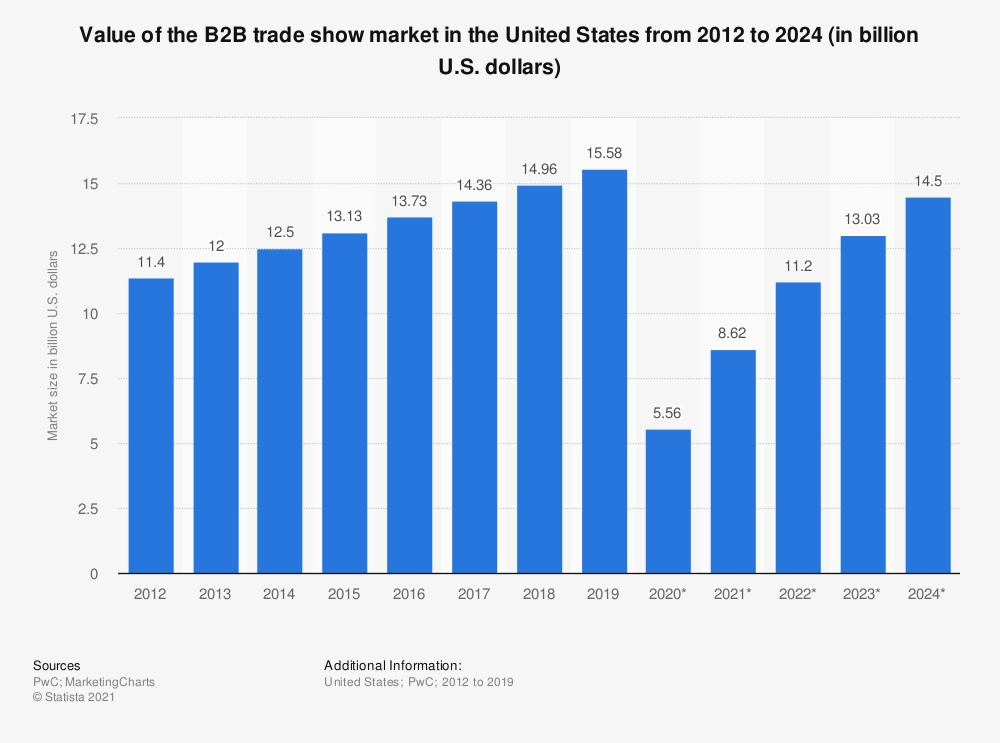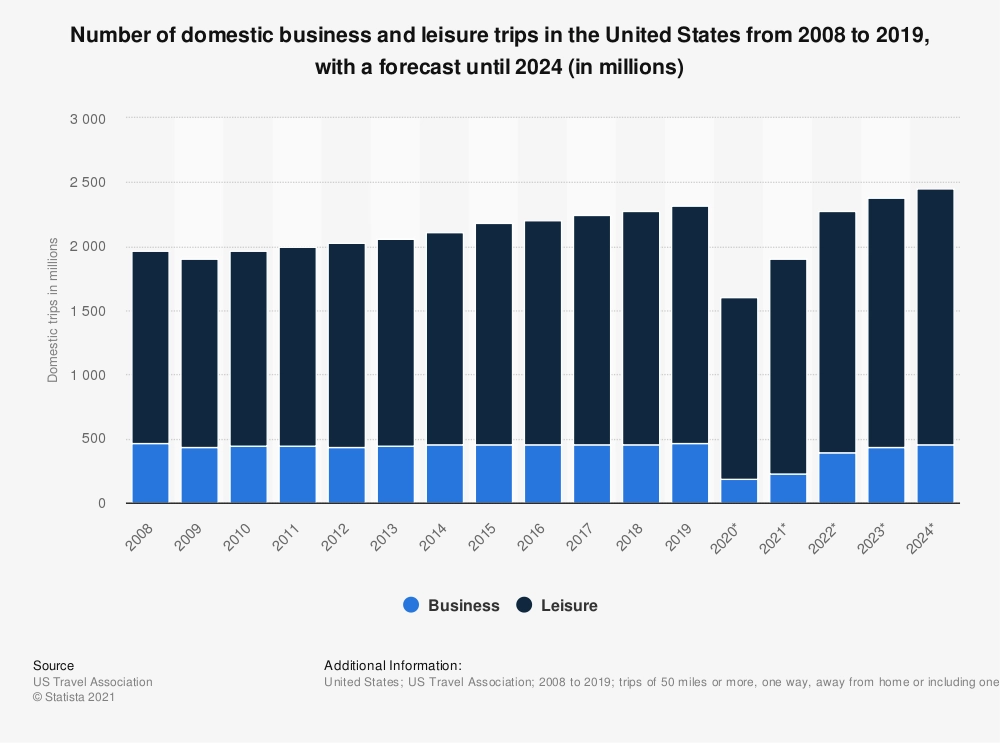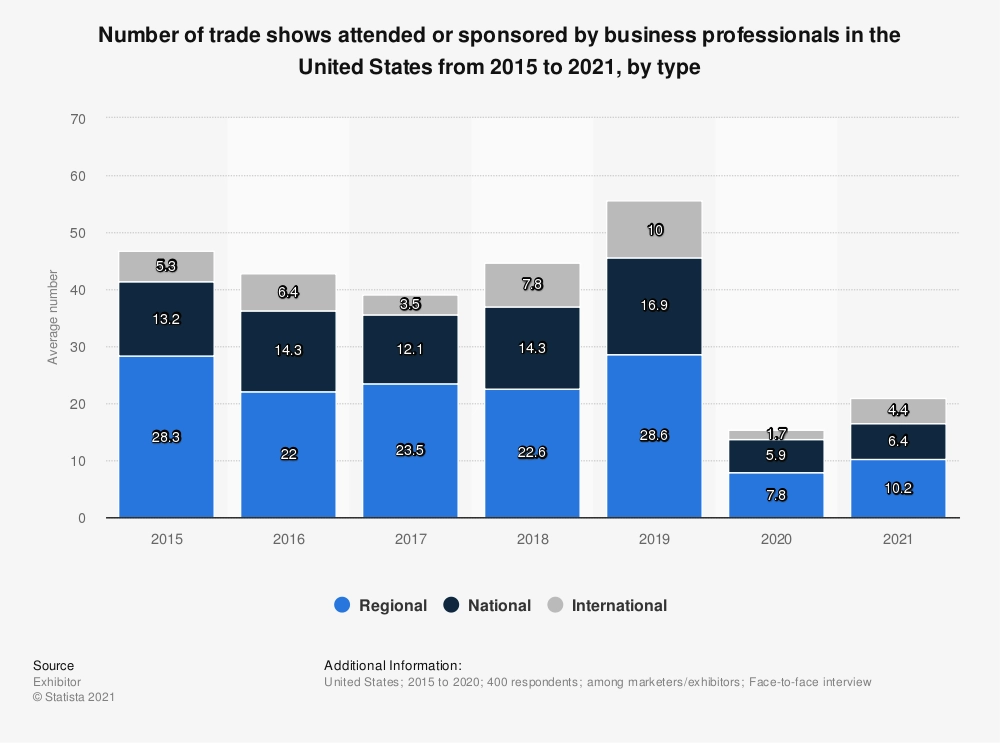Struggling Trade Shows Impact Entire Hospitality Sector
Editor’s Note: When the original video script recorded, the Javits Center had only 17 trade shows listed on their webpage. Since then, that number has risen to 28.
The Javits Center in New York hosts thousands of companies a year for shows. But 2022 outlook is bleak; as of now, there are only 28 shows listed for 2022. Compare that with the usual 175 shows, and the picture becomes pretty clear: trade shows haven’t locked in their rebound.
Major trade events are smaller this year and attracting fewer attendees, and it’s keeping value low. After a dip in 2020, PwC and MarketingCharts predicts the market size won’t come close to 2019 numbers—11.2 billion dollars for 2022 compared to 2019’s 15.58 billion.

This creates a domino effect. Business travel has been stumbling since 2020 and large trade shows can be a big tourism bump for cities. There’s some optimism for a rebound in the new year with less travel bands, but it won’t be a complete return to form. After the U.S. Travel Association reported a peak 464 million domestic business trips in 2019, 2022 is only forecasted to reach 395 million trips.
“The causation really isn’t the desire to have the trade shows, but it’s staffing their current demands,” said Gary Morris, CEO & Founder of Successful Channels. “I think 2022 we will see some resurgence in that regard as well, we will see some employment begin at some point to take a rise here.”

Without consistent mass bookings from trade shows, cities will look for answers on how to rebound their hotels and even centers.
“Hopefully hotels are using this as a time to rethink how they may be attracting travelers, what else they can do in the beautiful convention spaces,” said Sarah Dandashy, Host of Say Yes to Travel.
Some high-profile trade shows still pull a crowd, but attendance numbers signal a continued plateau overall. For niche trade events, does this mean they’ll need to pivot marketing strategies to increase attendance?

“Different trade show events that are not happening, they should be communicating with those people as to why they’re not happening and figure out if there’s a way for them to facilitate those needs. And if there’s potential for blending different trade shows on a smaller scale at the same event to lower the cost,” Morris said.
Businesses are ready to spend more on creative marketing, but where to spend that money, especially as it relates to trade show budgets, remains volatile.







